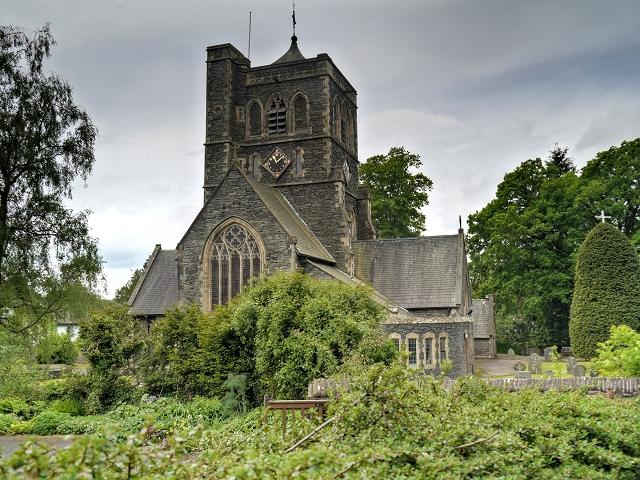Jesus Church
Troutbeck, Cumbria
Nestling in the hills of the Troutbeck Valley, a Place for walkers and pilgrims to pause, reflect and find their eternal bearings.

St Mary's church came into being as a direct result of the coming of the railway to Windermere, just a short walk downhill from the Railway Station and in view of the Lake and magnificent fells.
Windermere, Cumbria
A privately endowed chapel was the first building on the site, built by Revd John Aspinall-Addison in the Gothic style. The chapel, accommodating 200 people, was soon found to be inadequate and in 1852 a south aisle created an arcade of round arches on monolithic granite columns, one of the church’s most distinctive features.
In 1855 the chapel was purchased for the town and St Mary's was consecrated as a parish church in 1856. A north aisle was added in 1857 in a more typical gothic style, then a west extension to the nave, described at the time as ‘an architectural abortion’. In 1881, to remedy the error and keep pace with Windermere's relentless population growth, Paley & Austin was entrusted with a ‘safe’ solution to the west end and a new chancel tower. The distinctively shaped north east vestry, with semi circular apse and flat roof was added in 1961.
Following a catastrophic fire in 1988 the church was restored with a lighter wood contemporary styled roof. Fortunately, the fire did not reach the east end, and the vestries, chancel and Lady Chapel only suffered damage from smoke and water.
In 2006 a major reordering created a good mix of traditional Victorian structure with a distinctly contemporary interior, incorporating modern, flexible amenities. St Mary's now provides facilities for a wide range of club & society meetings and community events.
Troutbeck, Cumbria
Nestling in the hills of the Troutbeck Valley, a Place for walkers and pilgrims to pause, reflect and find their eternal bearings.
Bowness on Windermere, Cumbria
An oasis of calm in the heart of a busy tourist area.
Ings, Cumbria
St Anne’s is a beautiful Grade II* Georgian church, one of the few examples from this period in the North of England.